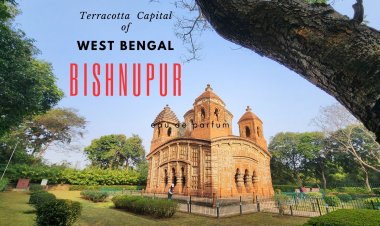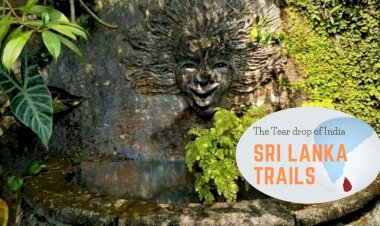Temple Tales : The Lesser known Adi Madhavaraya Swamy Temple
The Adi Madhavaraya temple is located at the village of Belluru in Nagamangala Taluk, in the Mandya District of Karnataka. It is one of the less known Hoysala temples. The temple is dedicated to Lord Madhavaraya, Venugopala, and Janardhana.

The Adi Madhavaraya temple was built sometime around 1296 AD. The presiding deity of this ancient temple is Lord Sri Adi Madhava, a form of Lord Vishnu. The sanctum sanctorum of this temple is found placed on top of a base structure of 32 angles and has a Dravidian shikhara. The temple walls are simple while the pillars are ornate with miniature shikhara. The antarala houses several brass sculptures. The ceilings over the Navaranga are sculpted with images of Lord Ganapati, Sri Ramanuja, and the Alwars.

The dwarapalakas are found in either side of the sanctum’s entrance with the image of Gajalaksmi in the door lintel.
Dwarapalakas are the two guardian deities or the gatekeepers of the temple entrances or the Dwaras. The name Dwarapalakas is a combination of two words Dwaram and Palakas. In which Dwaram stands for door or entrance and the Palakas for guardians.In the Vaishnava temples, Dwarapalakas can be seen with four hands holding Shanka and Chakra in the upper hands. While one of the lower hands showing Abhaya mudra and the other holding a Gada.
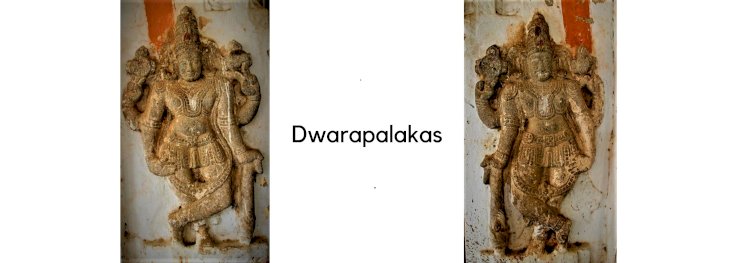
The story of Dwarapalakas - Jaya And Vijaya
Jaya and Vijaya were the gatekeepers of God Vishnu. These deities can be seen in the Vishnu temples standing on either side of the main sanctum or sometimes on the temple doors.
The story about these two deities goes in this way. Once, Jaya and Vijaya obstructed the entry of Sanat kumaras (The four sons that were born from the Bramha’s mind) to Vaikunta and said that Lord Vishnu is resting now they cannot be allowed in. But, the Sanat kumaras said Lord Vishnu is always available to his devotees and asked Jaya and Vijaya to let them in. But they refused to do so.
Finally, the argument heated up and the Sanat kumaras cursed the gatekeepers to lose their position and shall be born as mortals on the earth.
Later, Jaya and Vijaya approached Lord Vishnu and requested him to lift their curse. But Lord Vishnu said, the curse on both of you cannot be reverted, instead gave them two options. One option is to take seven births as his devotee on earth or to take three births as his enemy to come back to Vaikunta.
Interestingly, the gatekeepers had chosen to be his enemies. The internal meaning of this act was they could not bear the pain of staying away from their master for seven births. Hence, they choose to be enemies for three births.
Later, they were born as different demons each birth and ended by Lord Vishnu in different avataras. The three births are as follows, demons Hiraneykashipu and Hiranyaksha in Satya yuga. Ravana and Kumbhakarna in Treta yuga and Shishuplala and Dantavakra in Dwapara yuga.
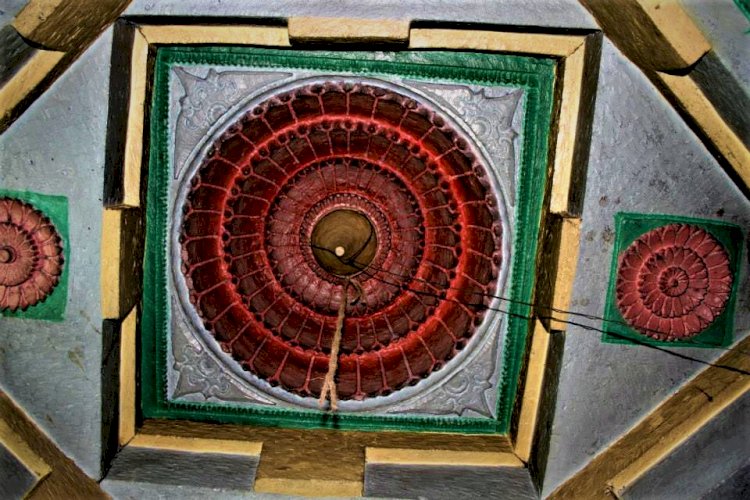
A large Karugallu (boulder) lies very close to the temple, having two huge boulders made of soapstone. There is also evidence found dating to 1269 A.D. which reveals the local practice of installing a Brahma on the boulder. People worship this Brahma especially during the winter festival known as karuhabba.
The Adimadhavaraya temple traditionally follows the Hoysala still of architecture. The three-celled structure Trikuta type is raised on a stellate parapet. Two other deities are also present in this temple other than Lord Adi Madhavaraya viz Lord Lakshmi Narayana and Gopala.
The chief deity is Sri Adimadhava who graces here from the main sanctum holding the Shanku and chakra in his upper hands. The deity is also seen holding a Gadha is his lower right arm while showing the Padma mudra (symbol) in his lower left. In the cell to the left of Adi-Madhava is a beautiful Deity of Janardhana, and to His left is Venugopala. These two deities originally graced from the nearby Mulesingeshwara temple (Kshetra palaka) built-in 1224 A.D. Historical evidence inform us that Sri Mulesingeshwara temple previously housed three deities namely Sindheshwara, Lakshminarayana, and Gopala while the later two deities were transferred to the Adi Madhavaraya temple.
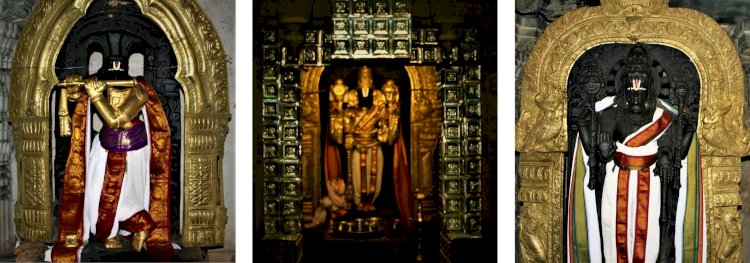
The vigraha of Lord Adi Madhava here is found placed on a garuda pedestal. The deity graces from the main sanctum sanctorum (garbhagriha), with the images of Dasavatara carved above the deity. The shrines of Lord Venugopala and Laksminarayana were more recently built and are positioned on either side of the main mukhamantapa. The prakara of this temple houses the shrine of Goddess Saumyanayaki to the left while Goddess Ranganayaki graces from the right side.
Traditionally in most South Indian temples, the Lord’s consort mostly graces from a separate shrine and not along with the Lord from the main sanctum. In the case of Devi Saumyanayaki here, the Goddess graces from a separate shrine. Thus she is actually believed to be the consort of Lord Adi Madhava and not the other deity Venugopala. Goddess Lakshmi, the divine consort of Lord Narayana is seen together with the deity in his sanctum. In case any authentic pieces of evidence emerge pointing out Devi Saumyanayaki as the consort of Sri Adi Madhava Perumal, it shall stand proof to the belief that Lord Krishna and Lord Vishnu were in fact regarded as one and the same, during that particular period of time at the region. It must also be noted that Goddess Saumyanayaki is the consort of Sri Krishna at Saumya Kesava temple.
How To Reach Belur
By Air: Nearest Airport is Bangalore International Airport.At a distance of about 220 km.
By Rail: Nearest Railway Station is Hassan. Situated about km.
By Road: Private and KSRTC buses ply between Bellur to Prominent towns Hassan and Bangalore.









